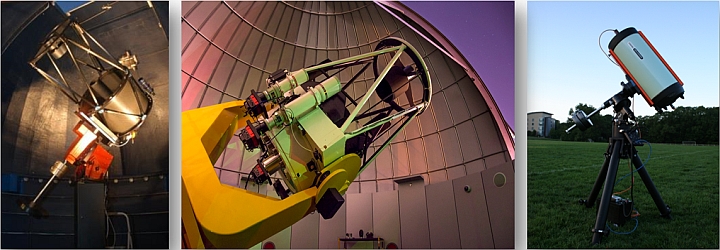
Overview of OSCOM
OSCOM is an Optical tracking and Spectral Characterization system designed specifically for responsive observation and analysis of CubeSats for Operational Missions. The project was seed funded by an NSF RAPID award (#AGS-1450999). By interpreting the optical and spectral features of resident space objects (RSOs), OSCOM is attempting to determine several physical parameters that describe the object: spin rate, deployable status, material makeup and degradation, attitude, and more. Such information can then be used to characterize, categorize, and monitor uncontrolled or unknown space objects, as well as independently provide diagnostic information for operational satellites, big or small.
Although OSCOM specializes in small satellites and CubeSats in low Earth orbit (LEO), the project team also develops observational and analysis techniques for solving Space Situational Awareness (SSA) problems with spatially resolved satellites in LEO, satellites in GEO, and debris and near Earth asteroids.
Some of the past and present research activities of OSCOM include:
- Robust photometry, spectroscopy, and orbit determination
- Spacecraft attitude determination and multi-site simultaneous observation
- Mining and heurtistic analysis of large datasets
- Telescope and detector characterization and tracking system design
- Lucky/speckle imaging and deconvolution methods for high resolution imaging
- CubeSat design and ground truth optical characterization
OSCOM is supported by a diverse team of Embry-Riddle students and engineers whose expertise includes small satellites, systems engineering, observational astronomy, data analysis, control systems, and computer science. Research efforts are led by Dr. Barjatya, Dr. von Hippel, and Dr. Reyhanoglu.
For more details on OSCOM, check out the menu at the top of the page, or browse the SAIL@ERAU YouTube channel.

